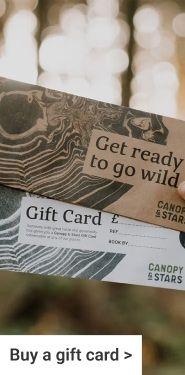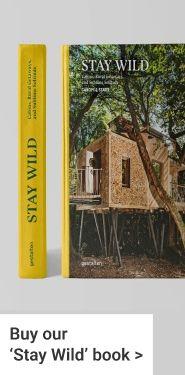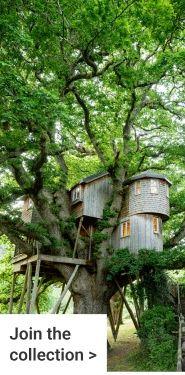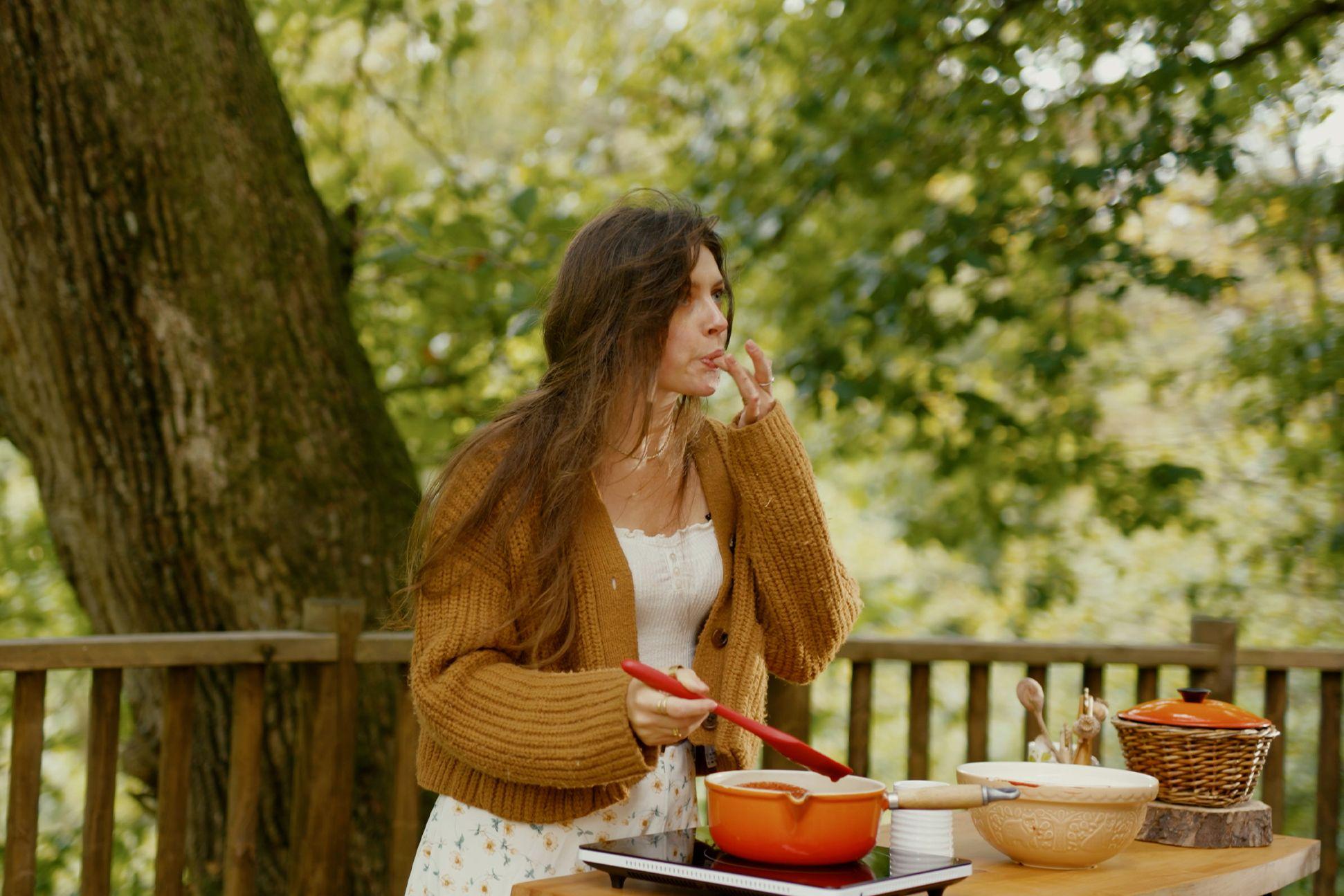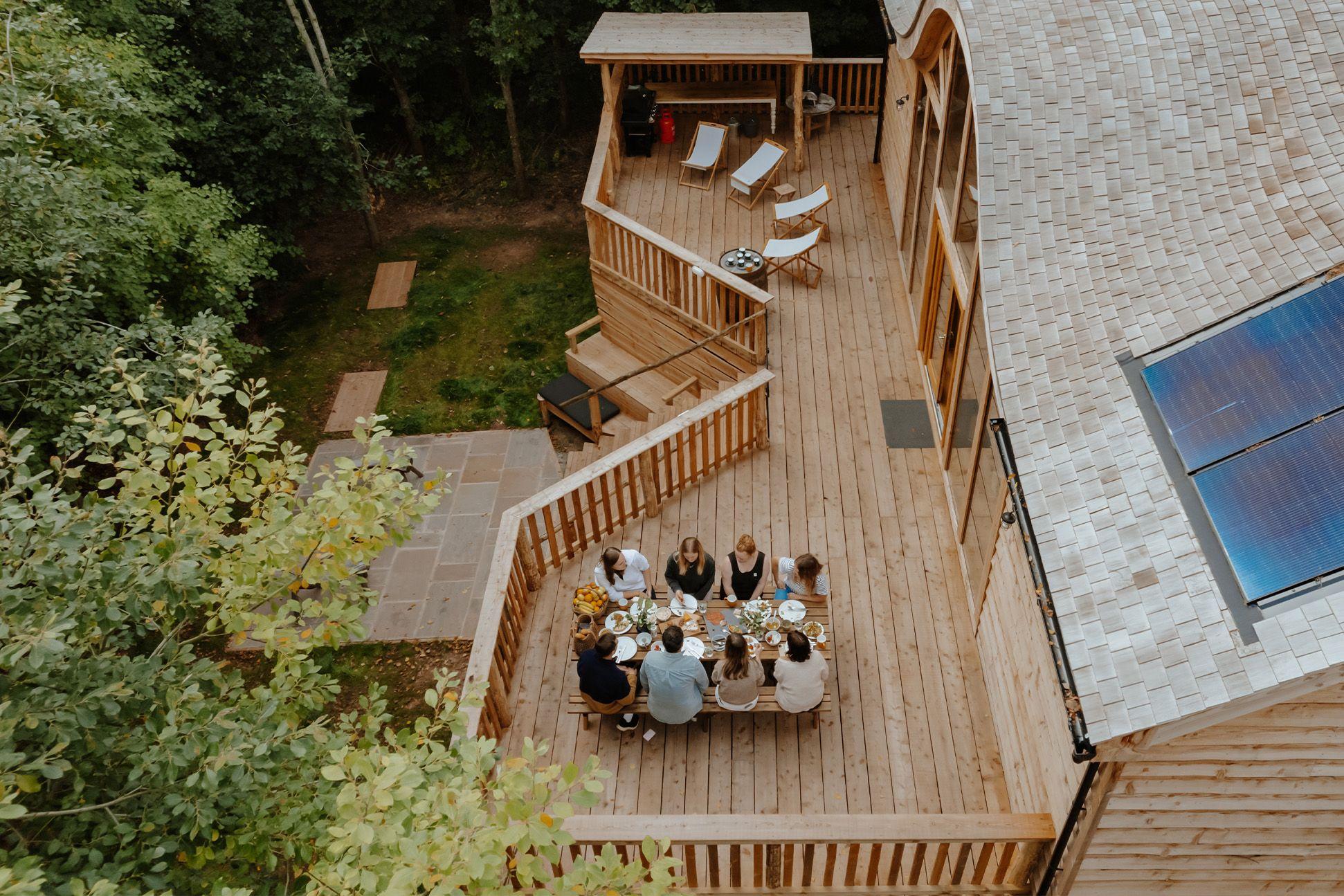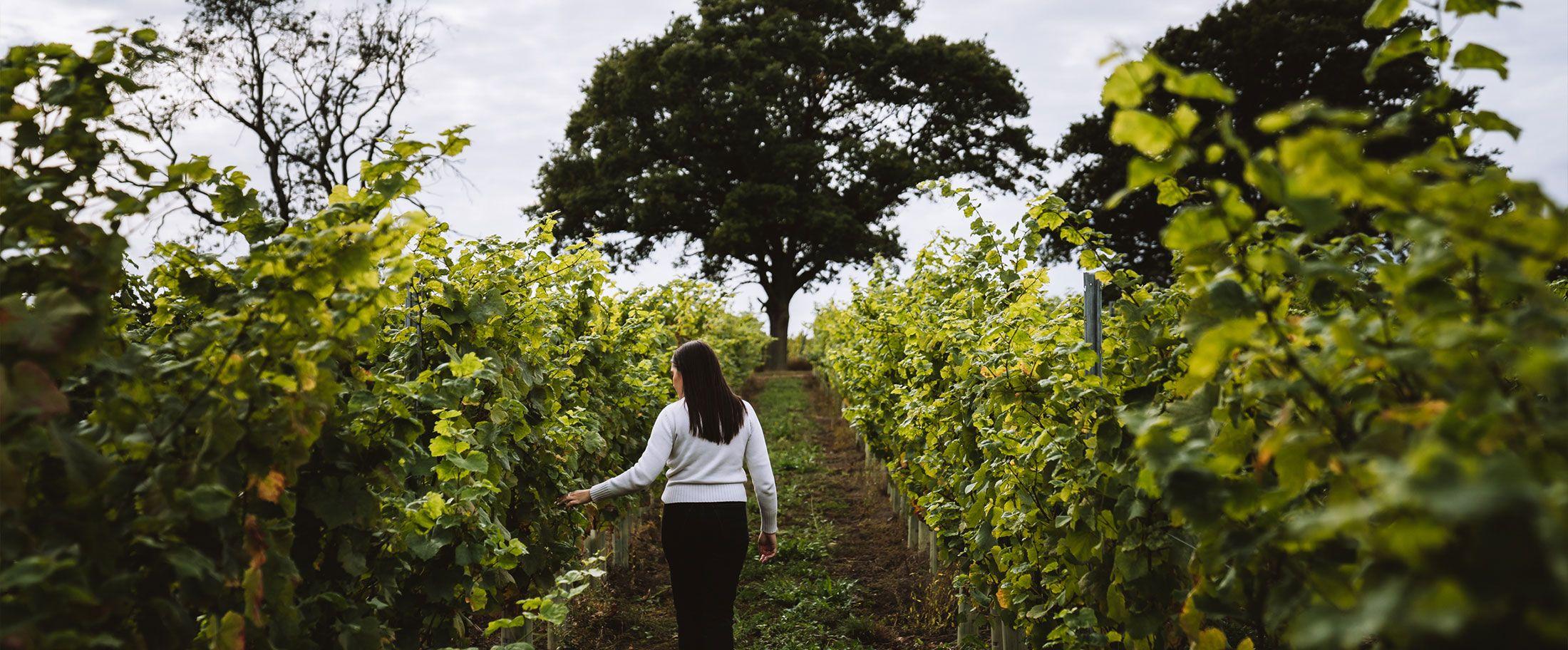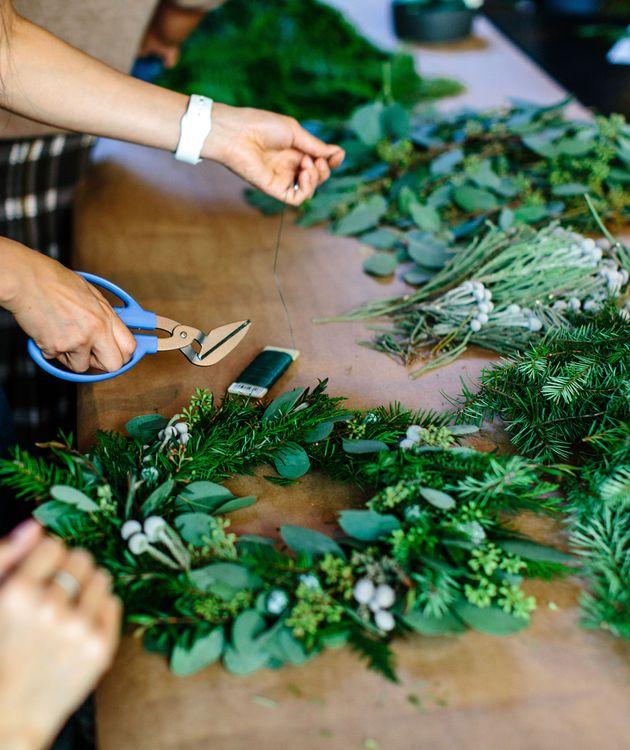
The five things you need to forage to have the best wreath on the street
There’s nothing quite like spotting all the Christmas decorations popping up around the place as you head into December (yes, IN December that is). Fairy lights twinkle in the streets, cotton wool nestles into window frames and, of course, wreaths riddled with red bows appear on front doors. This winter, we’re headed outdoors to find our very own wreath, and we want to see you out there! Instead of traipsing town, squeezing through the huddled masses in search of plastic – take to the fields, the woods, the wide-open spaces. Take it slow, take it easy, relax, and get creative. Dare we say it, even find a little Christmas joy?
The benefits
There are many benefits to foraging to gather your wreath ingredients. First and foremost, it’s a lot more sustainable. Instead of purchasing a plastic version, that’ll slowly break into millions of microplastics, you can grab the elements to make one from biodegradable ingredients that’ll be suitable for the compost (once you remove a bit of wire).
There’s also the benefit of being a little more mindful about your time during the holidays. It’s too easy to run out to the shops and take part in the frenzy of purchases, dipping and diving between the crowds in your local town, in a hectic buying spree that leaves you a little frazzled. Foraging your own wreath, along with building it yourself, might just be the opportunity you need to slow down, take your time getting out and about in nature, and enjoy mindfully.
Foraging rules
Before you run rampant in the woods scooping up branches and berries - remember, there IS a right way and a wrong way to forage! One golden rule to abide by, is never take or pick more than half of what you find. But there are many other caveats to consider. Your location for instance. Are you at a run of the mill woods, or a site of scientific interest? Could you be picking something endangered? Which also means knowing what it is you're foraging! If you need a little refresher on good practises when foraging, The Woodland Trust has some great rules to live by.
Things to forage
Hold on… what actually goes on a Christmas wreath? Good question! Answering this requires a knowledge of what they were originally for, and it’s a surprisingly complex story. To cut it down to bitesize, wreaths are a Christian tradition meant to symbolise eternal life, hence the circular shape and their material – evergreen plants.
If you want to go super traditional, you can stick to just the classic plants, holly, English ivy, and conifer sprigs. However, what goes in your wreath is really up to you! For ours we’ve suggest the following:
Hazel or Willow
What do I need wood for? Well, the first thing you’ll need to do when building your wreath will be to construct the frame itself. That is, if you’re not already building yours around an existing frame you own. Making a frame usually means bending the wood around a big, sturdy bowl, or just bending it to shape as best you can and holding it there with florist wire.
Where can I find hazel or willow branches? Hazel’s often found in woodland, scrub land and hedgerows – just keep an eye out for hazelnuts on the ground! And willow’s generally found in wet ground, so usually by rivers or streams.
Holly
Of all the wreath ingredients, holly has to be the most memorable – and possibly the most Christmassy looking! Depending on how you’ve constructed your frame you can either tie the holly in using string or florist wire, or just push the holly branches straight into the gaps. Bit of an obvious one here, but be sure to wear gloves to avoid getting prickled!
Where does holly grow? Start looking in woodland, scrub or hedgerows – and keep an eye out for its bright red berries!
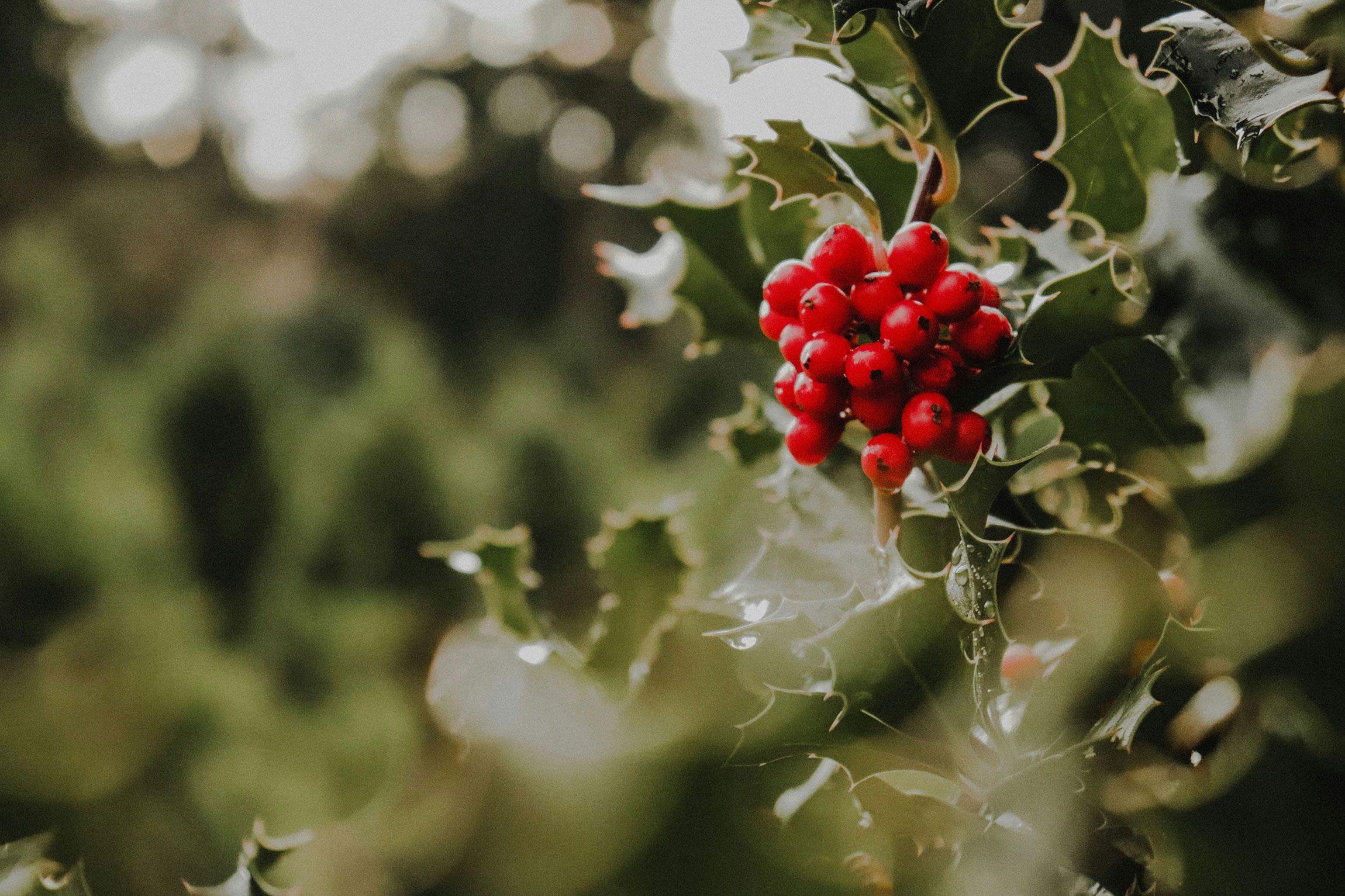
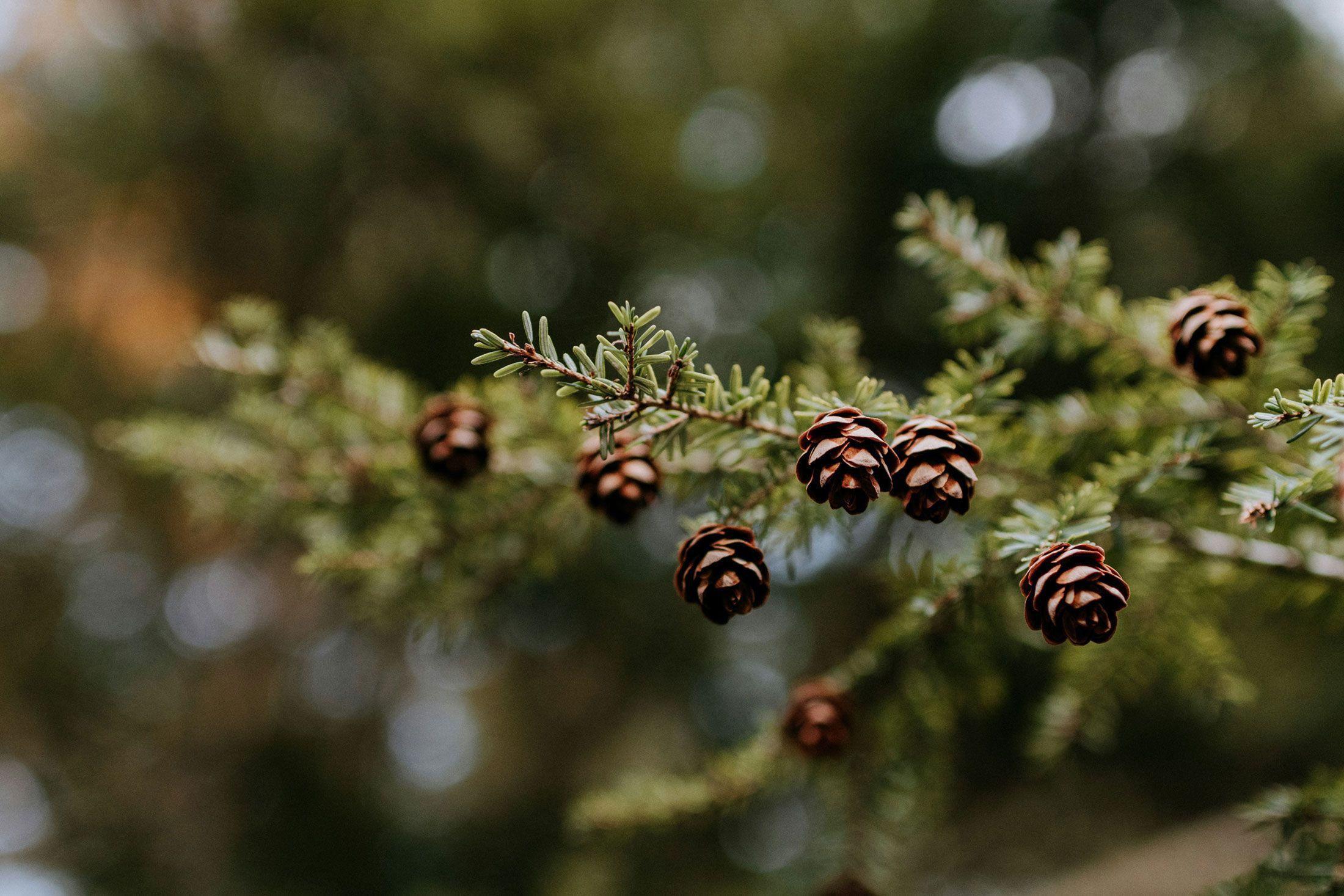
Hawthorn
If you’ve been busy making hawthorn ketchup, there’s a good chance you’ve a few hawthorn berries still lying around! If you’ve got them, add them to the wreath for those pops of colour that bring the whole thing to life.
If you don’t have any hawthorn berries, you can find them pretty easily. Hawthorn’s not a picky tree, it thrives pretty well everywhere, and can be found in similar places to hazel, willow or holly. It’s also the most commonly planted tree in hedges – so it should be fairly easy to find.
Christmas tree branches
Just as a nice little filler, Christmas tree branches are a nice and easy addition. They can thicken out the wreath, provide a good bit of colour and life to them, and of course, are very easy to source. Just raid your own tree once you get it!
Pinecones
You might want to just start here on your foraging journey, or perhaps end with them – as they’re so easy to source. Most people will remember walking past an area riddle with pinecones, and they’re very abundant. Not only are they great additions to a wreath, but they also make good decorations for a Christmas tree too.
Anything else?
Whatever you want! We’ve seen wreaths of all shapes and sizes, all colours and themes. There’s even people making wreaths from foodstuffs, like brussels sprouts! If you’re thinking more colour, you could go in search of some rosehips, mistletoe, holly berries or even dried citrus slices! Or if you want more body and shape, perhaps some ivy mixed in.
But, what about the nitty gritty of making it?
There are several different methods to making a wreath, and it appears, no right answer. You could take a florist's advice on the matter, after all they surely know how. Or, there's the gardener's - they can't be unfamiliar with them. There's almost no one as trustworthy as The National Trust, of course. But if in doubt, there's always Martha Stewart.
The main thing is just to enjoy the process! Get outdoors, and off the busy city streets, heading into wild spaces (We also happen to have some places you could stay...). And once you've got all your ingredients, take an afternoon to chill out and get a little creative making your wreath. And if you happen to be proud of yours, be sure to tag us on socials and let us see!





